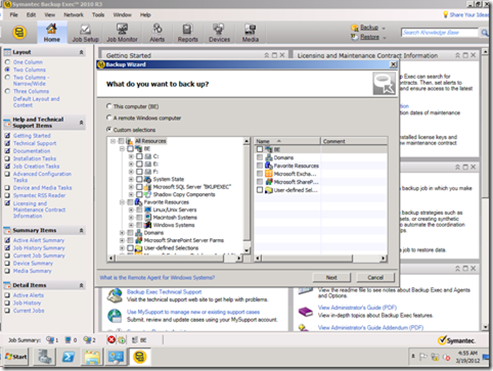

In the Exchange options, keep the defaults and click nextĪt the wizard end page, choose to restore now and click next In the job name, type something useful, and click next In the restore credential page, make sure to select an account that has the permissions, to validate the account permission click test and continue only when successful: Select the individual mailbox or emails you want to restore back and click next Go the top of information store and select it (don’t tick the selection box): In the next screen you have 2 options either select the mailbox you want to restore (or the database) or the individual email item, the restore process for mailbox/item differs from the mailbox database restore, We will select the individual items and restore them, to do that open the user mailbox in the restore selection pane: To restore emails or single mailbox create a backup restore job, in the welcome to the restore wizard click next Process 2: We can also restore even a single email or mailbox

Once the restore is successfully completed data from a RDB can be used for different kind of restores. Go to Settings à Microsoft Exchange and select Default options.Restore to Database or Recovery Database: Redirect to Server or Database Availability Group: Go to Microsoft Exchange Redirection and select Redirect Exchange Sets. Select the Database to be restored from the Backup Exec Restore job properties Select the This database can be overwritten by a restore option on the database property page in Exchange Management Console utility. If you do mount the recovery database before the restore, you must dismount it. New-MailboxDatabase -Recovery -Name RDB -Server “servername” -EdbFilePath “path” -LogFolderPath “path”Įxample: new-mailboxdatabase -Recovery -Name BD100 -Server MBX1 -EdbFilePath “D:BD100DatabaseBD100.edb” -LogFolderPath “D:BD100Logs”ĭo not mount the recovery database before the restore. Use the following command in shell to create the RDB: You cannot create a recovery database using the Exchange Management Console.
#Backup exec 2010 r3 remove device full#
Follow the below steps to restore full databaseĬreate a Recovery Database (RDB) in Exchange 2010 using the Exchange Management Shell. Process 1: The full restore in the restore database which requires full database selection. You can now monitor the job progress in the “Job Monitor” section, ensure to verify the success or review the logs in case of failure.


 0 kommentar(er)
0 kommentar(er)
